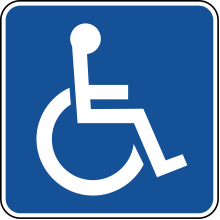The implications of being totally disabled are frightening. Disability has far greater economic, relational, and social consequences than dying.
Individuals (especially males) between the ages of 30 and 50 will likely suffer an incapacitating injury or illness before they die. However, for many people, it is easier to imagine dying than becoming disabled.
That’s probably because of the financial toll it can take. A disabled person continues to require shelter, food, medication, support services and more after having lost their ability to earn a living.
Not only are they not contributing, but the individual is also usually consuming a disproportionate amount of the assets the family needs to live on.
For still unexplained reasons, disability income protection plans have always seemed to lag behind other forms of protection, despite the fact that a long-term disability, which can be catastrophic, happens more frequently than most people think.
Why it’s important
Disability income provides essential protection against the loss of income due to an accident or illness.
There are two types of coverage:
Short-term coverage – This generally provides income replacement for a period of three to six months.
Long-term coverage – This starts after a short waiting period and, depending on the specific policy, usually lasts 2 years, 5 years or up to age 65.
Definitions matter
The definition of disability in the insurance policy is critical. The more liberal definition, which of course costs more, defines disability as being unable to do a specific job. This is called an “Own Occupation” definition.
For instance, if a surgeon has an accident and loses the use of one of his hands and can no longer perform operations. He can still receive benefits even if he is working and getting paid to teach surgical techniques.
But if a policy defines disability as being unable to do any job, it’s known as the “Any Occupation” definition. Under this type of policy, if that same surgeon accepts a position as a teacher, he would forfeit the benefits.
Note, however, that an “Any Occupation” definition may be just fine for most occupations. A financial professional can help you decide which one is right for you.
Other considerations
A cost of living adjustment rider is important since it adjusts the benefit annually according to the changes in the cost of living index. While not critical for a short duration disability, over a 10- or 20-year time frame it is essential.
The waiting or elimination period mentioned earlier is also flexible: 30-60-90-120-180 days. Obviously, the longer the waiting period, the lower the cost.
A good policy must be “Non-Cancelable” and “Guaranteed Renewable,” which protects the insured from an insurer not renewing the policy and raising the premiums.
You can obtain a disability insurance policy through an employer group plan or as an individual. The group plans are less expensive but have far more restrictions and caps than an individual plan. What many people do not realize is that most benefits received under a group plan are taxable!
Highly compensated employees can seldom obtain the level of protection they need under a group plan because of coverage limits. The best way to make up the difference is to purchase a wrap-around individual plan.
Without disability insurance protection, you can lose everything you own very quickly as the result of an accident or illness. Don’t gamble with your future.

